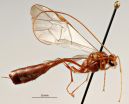(Press-News.org) New research into an Icelandic eruption has shed light on how the Earth's crust forms, according to a paper published today in Nature.
When the Bárðarbunga volcano, which is buried beneath Iceland's Vatnajökull ice cap, reawakened in August 2014, scientists had a rare opportunity to monitor how the magma flowed through cracks in the rock away from the volcano. The molten rock forms vertical sheet-like features known as dykes, which force the surrounding rock apart.
Study co-author Professor Andy Hooper from the Centre for Observation and Modelling of Earthquakes, volcanoes and Tectonics (COMET) at the University of Leeds explained: "New crust forms where two tectonic plates are moving away from each other. Mostly this happens beneath the oceans, where it is difficult to observe.
"However, in Iceland this happens beneath dry land. The events leading to the eruption in August 2014 are the first time that such a rifting episode has occurred there and been observed with modern tools, like GPS and satellite radar."
Although it has a long history of eruptions, Bárðarbunga has been increasingly restless since 2005. There was a particularly dynamic period in August and September this year, when more than 22,000 earthquakes were recorded in or around the volcano in just four weeks, due to stress being released as magma forced its way through the rock.
Using GPS and satellite measurements, the team were able to track the path of the magma for over 45km before it reached a point where it began to erupt, and continues to do so to this day. The rate of dyke propagation was variable and slowed as the magma reached natural barriers, which were overcome by the build-up of pressure, creating a new segment.
The dyke grows in segments, breaking through from one to the next by the build up of pressure. This explains how focused upwelling of magma under central volcanoes is effectively redistributed over large distances to create new upper crust at divergent plate boundaries, the authors conclude.
As well as the dyke, the team found 'ice cauldrons' - shallow depressions in the ice with circular crevasses, where the base of the glacier had been melted by magma. In addition, radar measurements showed that the ice inside Bárðarbunga's crater had sunk by 16m, as the volcano floor collapsed.
COMET PhD student Karsten Spaans from the University of Leeds, a co-author of the study, added: "Using radar measurements from space, we can form an image of caldera movement occurring in one day. Usually we expect to see just noise in the image, but we were amazed to see up to 55cm of subsidence."
Like other liquids, magma flows along the path of least resistance, which explains why the dyke at Bárðarbunga changed direction as it progressed. Magma flow was influenced mostly by the lie of the land to start with, but as it moved away from the steeper slopes, the influence of plate movements became more important.
Summarising the findings, Professor Hooper said: "Our observations of this event showed that the magma injected into the crust took an incredibly roundabout path and proceeded in fits and starts.
"Initially we were surprised at this complexity, but it turns out we can explain all the twists and turns with a relatively simple model, which considers just the pressure of rock and ice above, and the pull exerted by the plates moving apart."
INFORMATION:
Further information
Professor Hooper is available for interview. Please contact the University of Leeds Press Office on 0113 343 4031 or email pressoffice@leeds.ac.uk
The paper 'Segmented lateral dyke growth in a rifting event at Bárðarbunga volcanic system, Iceland' is published in Nature on 15 December 2014.
The research leading to these results has received funding from the European Community's Seventh Framework Programme under Grant Agreement No. 308377 (Project FUTUREVOLC)
Images
Downloadable from: https://drive.google.com/folderview?id=0B691WmQZab8LTmVGRU1nQ1FELWs&usp=sharing
Fig 1: Map from radar interferometry (InSAR) showing the deformation that occurred over the dyke north of the ice cap, between August 13 and August 29, 2014. The measured deformation is a combination of both horizontal and vertical movements, and reaches close to 2 metres in total. The red area indicates movement west and up, while the purple and yellow areas indicate movement east and up.
Fig 2:
Map from radar interferometry (InSAR) showing the subsidence that occurred inside the Bárðarbunga caldera, between August 27 and August 28, 2014. Positive numbers indicate movement away from the satellite, which in this case means mostly downward.
Credit for both images:
Data processing was carried out by COMET, University of Leeds and the Institute of Earth Science, University of Iceland. Processing carried out using CSK Products, © ASI (Italian Space Agency) - 2014, delivered under an ASI license to use. COSMO-SkyMed images have been provided in the framework of the Geohazard Supersite Initiative.
The carbon in the atmosphere, ocean, surface life, and other shallow, near surface reservoirs accounts for only about 10% of Earth's carbon. Where is the other 90%? What is it doing? Does it matter?
The Deep Carbon Observatory (DCO), an ambitious 10-year (2009-2019) program of exploration and experimentation, pursues the mysterious 90% while building a new scientific field with a network of scientists from more than 40 countries. Recent results from DCO researchers are filling in the global carbon puzzle with findings that extend our understanding of the origins and limits ...
Researchers at Yale and Boston University and their Russian collaborators have found that occasional heroin use by HIV-positive patients may be particularly harmful to the immune system and worsens HIV disease, compared to persistent or no heroin use.
The findings are published in the journal AIDS and Behavior.
"We expected that HIV-positive patients who abused heroin on an ongoing basis would have the greatest decreases in their CD4 count, but this preliminary study showed that those who abused heroin intermittently had lower CD4 cell counts, indicating a weakened ...
The introduction of neutral umpires in Test cricket led to a drop in the number of LBW decisions going in favour of home teams, a study has revealed.
The findings from research by economists, published by the Journal of the Royal Statistical Society, come amidst renewed debate on whether neutral umpiring is still required in Test matches following the introduction of the Decision Review System (DRS).
Economists Dr Abhinav Sacheti and Professor David Paton from Nottingham University Business School and Dr Ian Gregory-Smith from the University of Sheffield analysed Leg ...
This news release is available in Japanese. New research published in the journal genesis, by Kenneth Baughman, Dr. Eiichi Shoguchi, Professor Noriyuki Satoh of the Marine Genomics Unit at the Okinawa Institute of Science and Technology Graduate University, and collaborators from Australia, reports an intact Hox cluster in the Crown of Thorns starfish, Acanthaster planci. This surprising result contrasts with the relatively disorganized Hox cluster found in sea urchins, which are also echinoderms, classification of animals including starfish, sea lilies, and sea cucumbers. ...
SALT LAKE CITY, Dec. 15, 2014 -- Because of undetected toxicity problems, about a third of prescription drugs approved in the U.S. are withdrawn from the market or require added warning labels limiting their use. An exceptionally sensitive toxicity test invented at the University of Utah could make it possible to uncover more of these dangerous side effects early in pharmaceutical development so that fewer patients are given unsafe drugs.
To prove the point, the U researchers ran their test on Paxil, an antidepressant that thousands of pregnant women used in the years ...
The same species of monkeys located in separate geographic regions use their alarm calls differently to warn of approaching predators, a linguistic analysis by a team of scientists reveals. The study, which appears in the journal Linguistics and Philosophy, reveals that monkey calls have a more sophisticated structure than was commonly thought.
"Our findings show that Campbell's monkeys have a distinction between roots and suffixes, and that their combination allows the monkeys to describe both the nature of a threat and its degree of danger," explains the study's lead ...
CAMBRIDGE, MA -- A new study from MIT implicates a family of RNA-binding proteins in the regulation of cancer, particularly in a subtype of breast cancer. These proteins, known as Musashi proteins, can force cells into a state associated with increased proliferation.
Biologists have previously found that this kind of transformation, which often occurs in cancer cells as well as during embryonic development, is controlled by transcription factors -- proteins that turn genes on and off. However, the new MIT research reveals that RNA-binding proteins also play an important ...
In 1912, three species in the parasitic wasp genus Ophion were described by two different entomologists, increasing the number of known species in North America to eleven. It has long been known that the actual diversity is much higher; however, it took 102 years for any additional species to be described.
"The main reason for this is that everyone has assumed that Ophion are just too difficult to tell apart. Museum collections are full of unidentified Ophion, but nobody has wanted to face the challenge of sorting them out" said Marla Schwarzfeld, an entomologist who ...
CAMBRIDGE, Mass., December 15 -- Scientists at The Forsyth Institute and Tufts University have succeeded in describing and validating a unique system of oral vaccine delivery using a common bacteria found in the mouth. Findings published today by Elsevier in Microbes and Infection identify Streptococcus mitis as a successful vector for oral mucosal immunization, and further research will determine its potential clinical use in tuberculosis vaccine development.
"Although injected vaccines are traditionally viewed as effective means of immunization to protect internal organs, ...
The sudden appearance of a face within our visual field can affect the motor action accompanying a gesture even if the face is totally unrelated to what we are doing and even if we try to ignore it. At one condition, though: the face must display an emotionally significant expression. A study conducted by scientists of the International School for Advanced Studies in Trieste, and just published in Psychonomic Bullettin & Review, describes the phenomenon in detail.
Many are the things that can influence our actions at the motor level. Among them, a particularly effective ...



